Delve into creativity, explore tiny worlds, and craft unique ecosystems with small terrariums you can easily make at home. You’ll find that these miniature gardens, enclosed in glass containers, bring nature indoors using simple materials like a 1-quart glass jar or a 6-inch orb. They’re perfect for small spaces; all you need are layers of 1-inch gravel, activated charcoal, and potting soil. Curious about specific designs? Stick around for inspiring project ideas.
Contents
Glass Jar Jungle
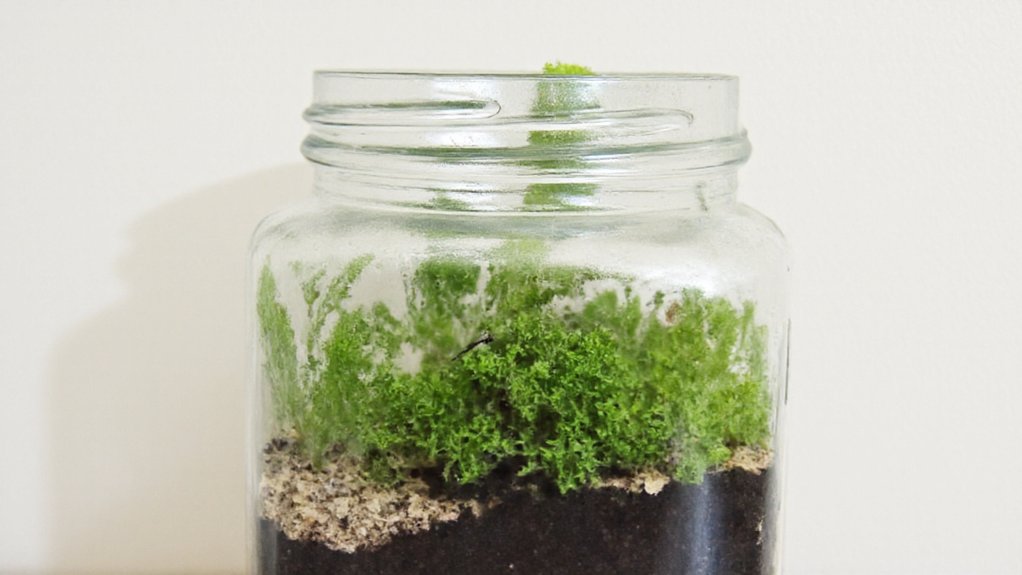
A Glass Jar Jungle is a delightful and accessible small terrarium project that transforms an ordinary glass jar into a miniature tropical ecosystem. Using a simple mason jar or any clear glass container with a lid, you can create a self-sustaining environment for small plants like mosses, ferns, or air plants. The enclosed space helps maintain humidity, mimicking the conditions of a jungle, and requires minimal maintenance once established.
To build your Glass Jar Jungle, start with a layer of pebbles or gravel at the bottom for drainage, followed by a thin layer of activated charcoal to keep the environment fresh. Add a substrate like potting soil or sphagnum moss, then carefully plant your chosen greenery, arranging them to create a lush, layered look. Seal the jar to retain moisture, place it in indirect sunlight, and watch your tiny jungle thrive as a charming piece of living decor.
Hanging Orb Oasis
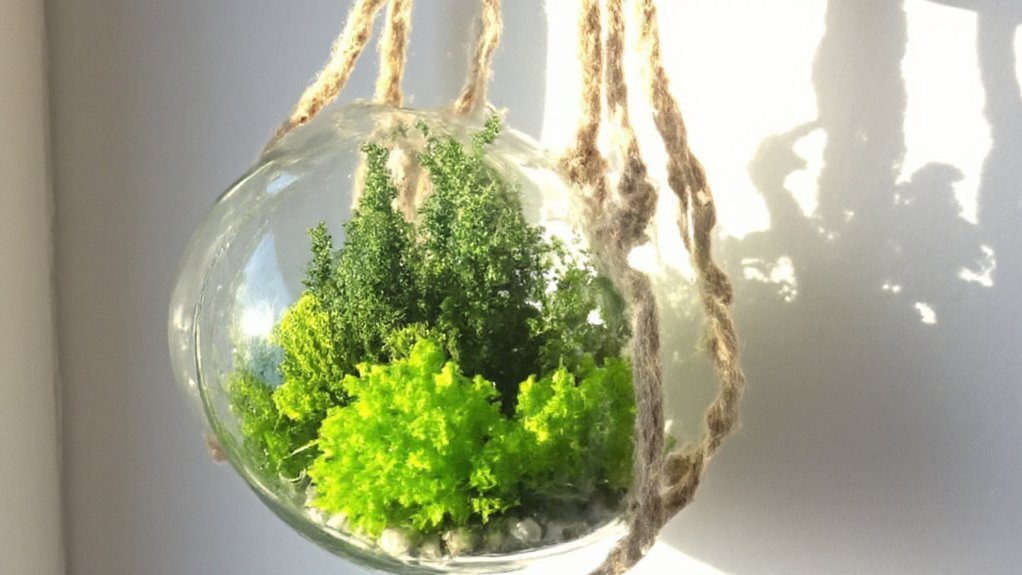
The Hanging Orb Oasis is an enchanting small terrarium project that brings a touch of greenery into any space with a unique, suspended design. This project involves creating a miniature ecosystem inside a glass orb that can be hung from a ceiling or mounted on a stand, making it an eye-catching decor piece for homes or offices. The transparent orb allows for a 360-degree view of the lush, contained world within, featuring small plants like air plants, moss, or miniature ferns, along with decorative elements such as pebbles or tiny figurines.
To create a Hanging Orb Oasis, you’ll need a clear glass orb with an opening, a selection of low-maintenance plants, and a few simple materials like potting mix and twine or wire for hanging. The process is straightforward: layer the bottom with small rocks for drainage, add a thin layer of soil or moss, and carefully arrange your chosen plants inside. Once sealed or partially closed, the orb can be hung in a well-lit area, providing a serene, floating garden that requires minimal care while adding a modern, artistic flair to your surroundings.
Teacup Tiny Garden
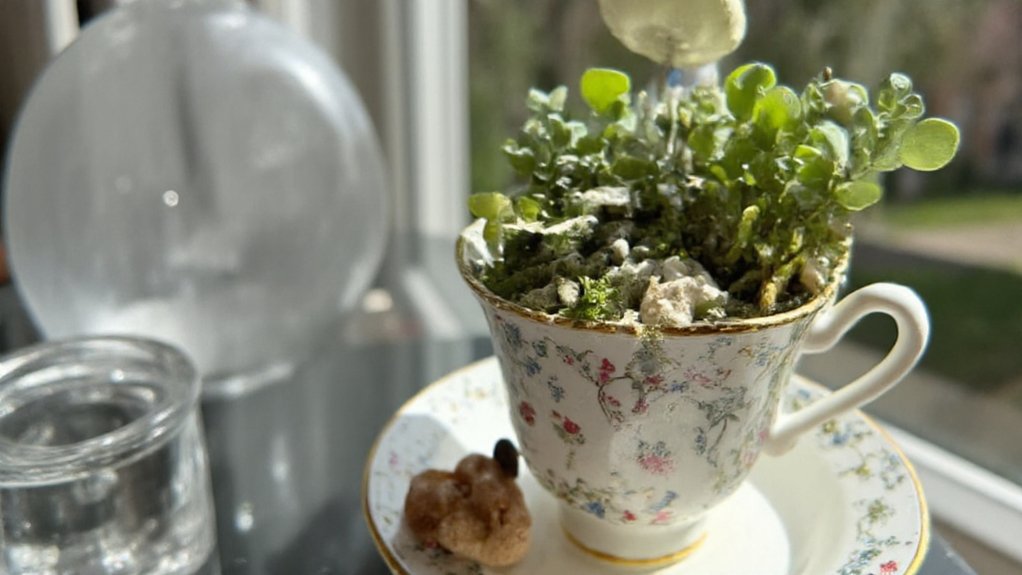
A Teacup Tiny Garden is a charming and creative way to bring a miniature green space into your home using a simple teacup as the container. This small terrarium project is perfect for those with limited space or anyone looking to add a touch of nature to their desk, shelf, or windowsill. By repurposing an old or decorative teacup, you can create a whimsical garden that requires minimal maintenance and materials.
To make a Teacup Tiny Garden, start with a layer of small pebbles or gravel at the bottom for drainage, followed by a thin layer of activated charcoal to keep the environment fresh. Add a layer of potting soil, then plant tiny succulents, moss, or air plants that thrive in confined spaces. Decorate with miniature figurines, rocks, or shells to enhance the fairy-tale aesthetic. This project is not only easy and affordable but also allows for endless customization to match your personal style.
Mason Jar Meadow
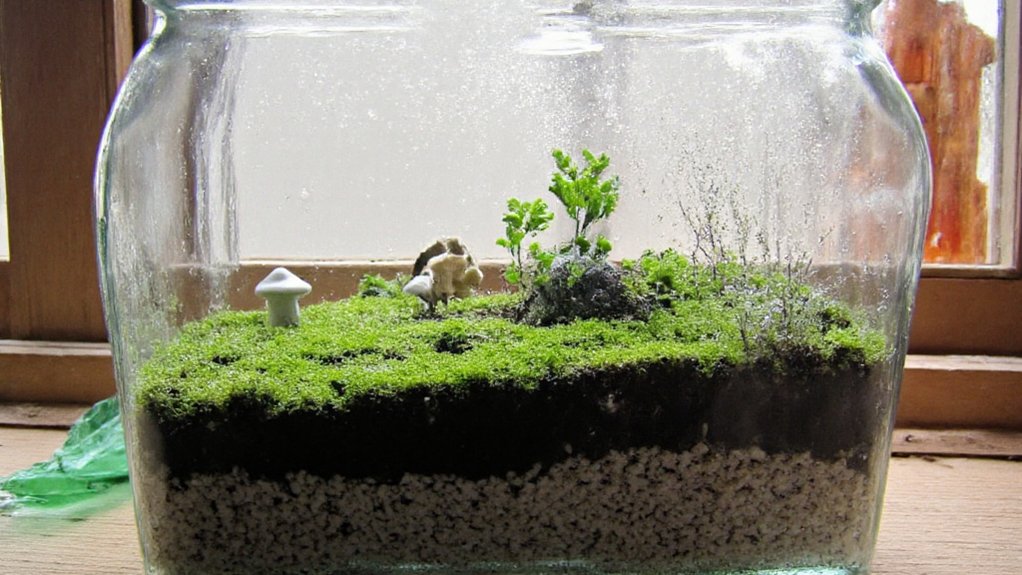
The Mason Jar Meadow is a charming and simple small terrarium project that brings a touch of nature into any space using a common household item—a mason jar. This mini ecosystem is perfect for beginners, as it requires minimal materials and space, making it an ideal way to experiment with terrarium building. To create a Mason Jar Meadow, you’ll layer small pebbles or gravel at the bottom for drainage, add a thin layer of activated charcoal to keep the environment fresh, and then top it with potting soil. Plant small, low-maintenance greenery like moss, air plants, or tiny ferns, and decorate with miniature figurines or natural elements like twigs and stones to mimic a meadow scene.
This project is not only a creative outlet but also a low-cost way to add greenery to your home or office. The clear glass of the mason jar allows you to observe the layers and growth of your tiny meadow, while the lid can be used to control humidity—keeping it on for a more tropical environment or off for drier plants. With just a little care, such as occasional watering and placing the jar in indirect sunlight, your Mason Jar Meadow can thrive as a delightful, self-contained natural display.
Vintage Bottle Biome
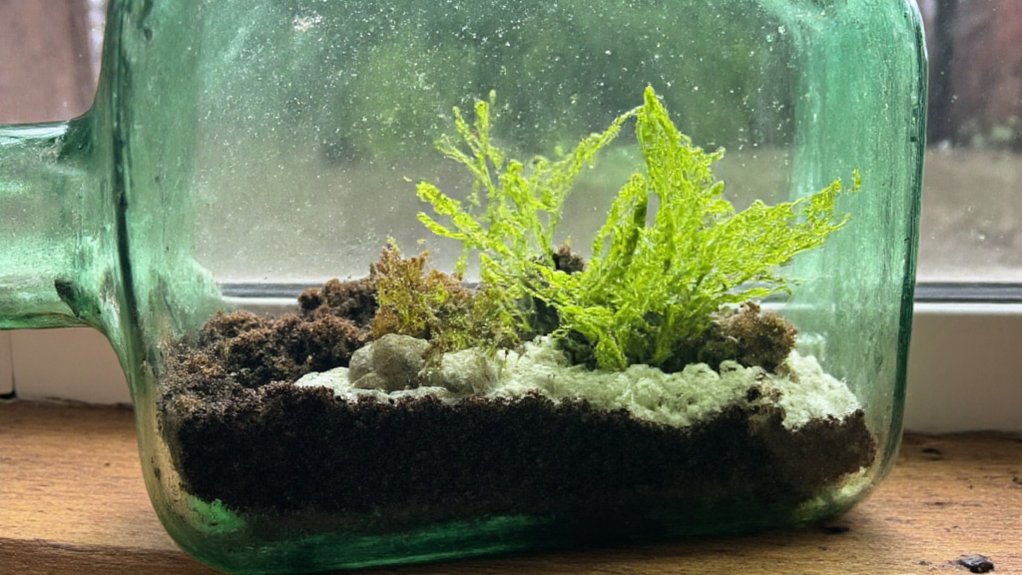
A Vintage Bottle Biome is a charming and creative way to craft a small terrarium using an old glass bottle with a narrow neck, such as a vintage soda or wine bottle. This project transforms a simple, often discarded item into a miniature ecosystem that can house tiny plants like moss, air plants, or small ferns. The unique shape of the bottle adds a nostalgic aesthetic while providing a contained environment that helps maintain humidity for the plants inside.
To create this biome, carefully clean and dry the bottle, then use tools like a spoon or chopsticks to layer small pebbles for drainage, followed by a thin layer of activated charcoal to prevent mold, and finally a substrate suitable for your chosen plants. Planting in such a confined space requires patience and precision, but the result is a self-sustaining, low-maintenance display that can brighten up any shelf or windowsill with a touch of vintage charm.
Geometric Glass Grove

The Geometric Glass Grove is a stylish and modern small terrarium project that utilizes geometric-shaped glass containers to create a visually striking miniature garden. These containers, often in shapes like hexagons, pyramids, or cubes, add a contemporary flair to the traditional terrarium concept, making them perfect for home decor or as unique gifts.
To create a Geometric Glass Grove, select a glass container with a geometric design and layer it with small pebbles or gravel for drainage, followed by a thin layer of activated charcoal to keep the environment fresh. Add a suitable substrate like potting soil, then plant small, low-maintenance plants such as succulents, air plants, or moss. Finish with decorative elements like tiny figurines or natural stones to enhance the aesthetic appeal of this chic, enclosed ecosystem.
Mini Fishbowl Forest
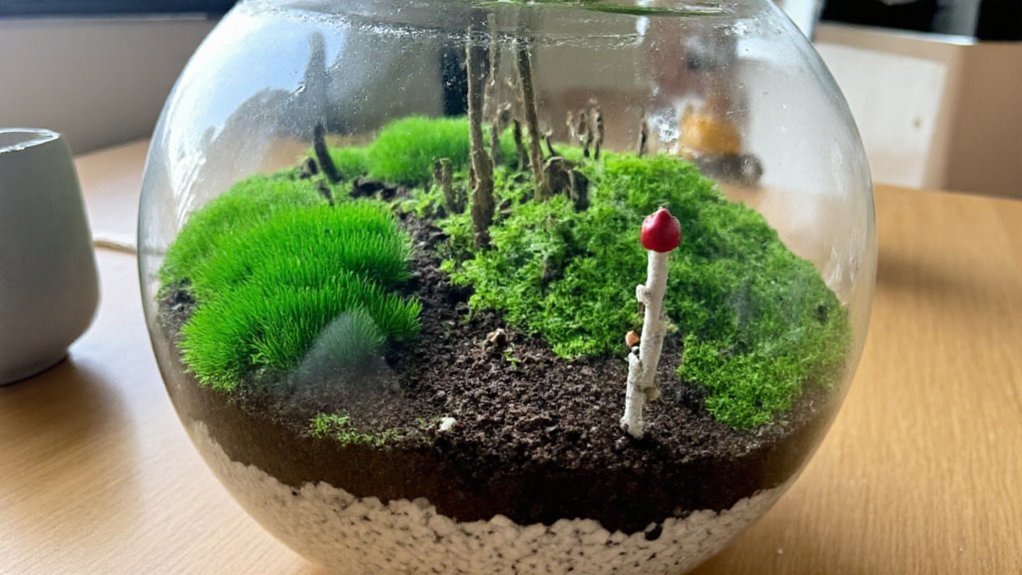
A Mini Fishbowl Forest is a charming and compact terrarium project that transforms a small glass fishbowl into a lush, miniature woodland scene. This project is perfect for beginners, as it requires minimal materials and space while offering a creative way to bring a piece of nature indoors. Using a clear glass bowl, you can layer gravel, activated charcoal, and potting soil to create a stable base for tiny plants like moss, ferns, or small-leafed ivy.
To enhance the forest theme, add natural elements such as small twigs, pebbles, or even miniature figurines like tiny animals or fairy garden accessories. This setup not only mimics a forest floor but also creates a low-maintenance ecosystem that thrives in indirect sunlight and requires only occasional watering. A Mini Fishbowl Forest is an ideal centerpiece for a desk or shelf, providing a calming, green escape in any small space.
Repurposed Lightbulb Landscape
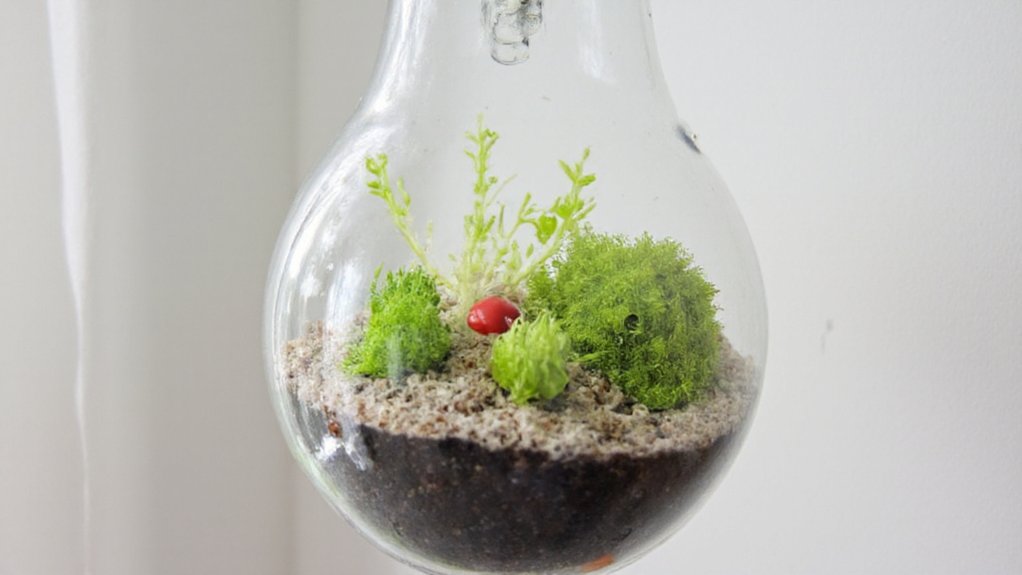
A repurposed lightbulb landscape is a creative and miniature terrarium project that transforms old, burnt-out lightbulbs into tiny, self-contained ecosystems. By carefully hollowing out the bulb and filling it with small pebbles, moss, air plants, or miniature figurines, you can create a whimsical, enclosed garden that serves as a unique decorative piece. This project is ideal for those who enjoy upcycling and want to add a touch of greenery to small spaces like desks or shelves.
To make a lightbulb terrarium, the bulb must first be safely disassembled by removing the metal base and inner components, ensuring the glass remains intact. Once prepared, layer the bottom with tiny rocks for drainage, add a bit of soil or moss, and carefully place small plants or decorations inside using tweezers. These delicate landscapes require minimal maintenance, often just a spritz of water occasionally, making them a low-effort yet visually striking addition to any space.
Small Box Sanctuary

A Small Box Sanctuary is a compact and creative way to build a miniature terrarium using a simple box or container as the base. This project is ideal for those with limited space or beginners looking to experiment with terrarium design. By repurposing small boxes, such as jewelry cases, wooden crates, or even glass containers, you can create a tiny ecosystem that houses small plants like moss, air plants, or succulents.
To create a Small Box Sanctuary, start by lining the box with a waterproof material if needed, then add layers of pebbles for drainage, activated charcoal to prevent mold, and a suitable substrate for your chosen plants. Arrange the plants and decorative elements like miniature figurines or rocks to craft a personalized scene. This type of terrarium is low-maintenance and can be placed on a desk, shelf, or windowsill, bringing a touch of nature into any small space.
Desk-Sized Desert Scene
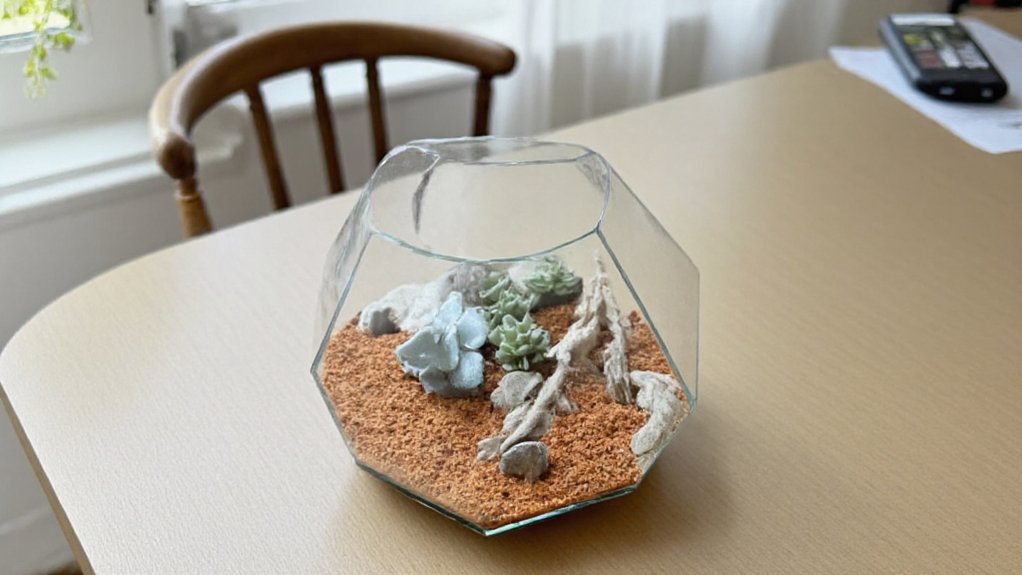
Creating a desk-sized desert scene in a small terrarium is a fantastic way to bring a slice of arid beauty to your workspace. Start with a small glass container, ideally with a lid to maintain humidity if needed, though desert scenes often thrive in open containers. Layer the bottom with a mix of sand and small pebbles to mimic the desert floor, ensuring proper drainage by adding a thin layer of activated charcoal beneath the substrate to prevent mold and odors.
Select low-maintenance desert plants like small cacti or succulents, such as Echeveria or Haworthia, which require minimal watering and can handle the dry conditions of a terrarium. Arrange these plants with small rocks, driftwood, or miniature figurines to create a natural-looking landscape. Place the terrarium in a spot with bright, indirect sunlight, and water sparingly—only when the soil is completely dry—to replicate the harsh, arid environment of a desert. This compact project adds a calming, low-effort touch of nature to any desk.
